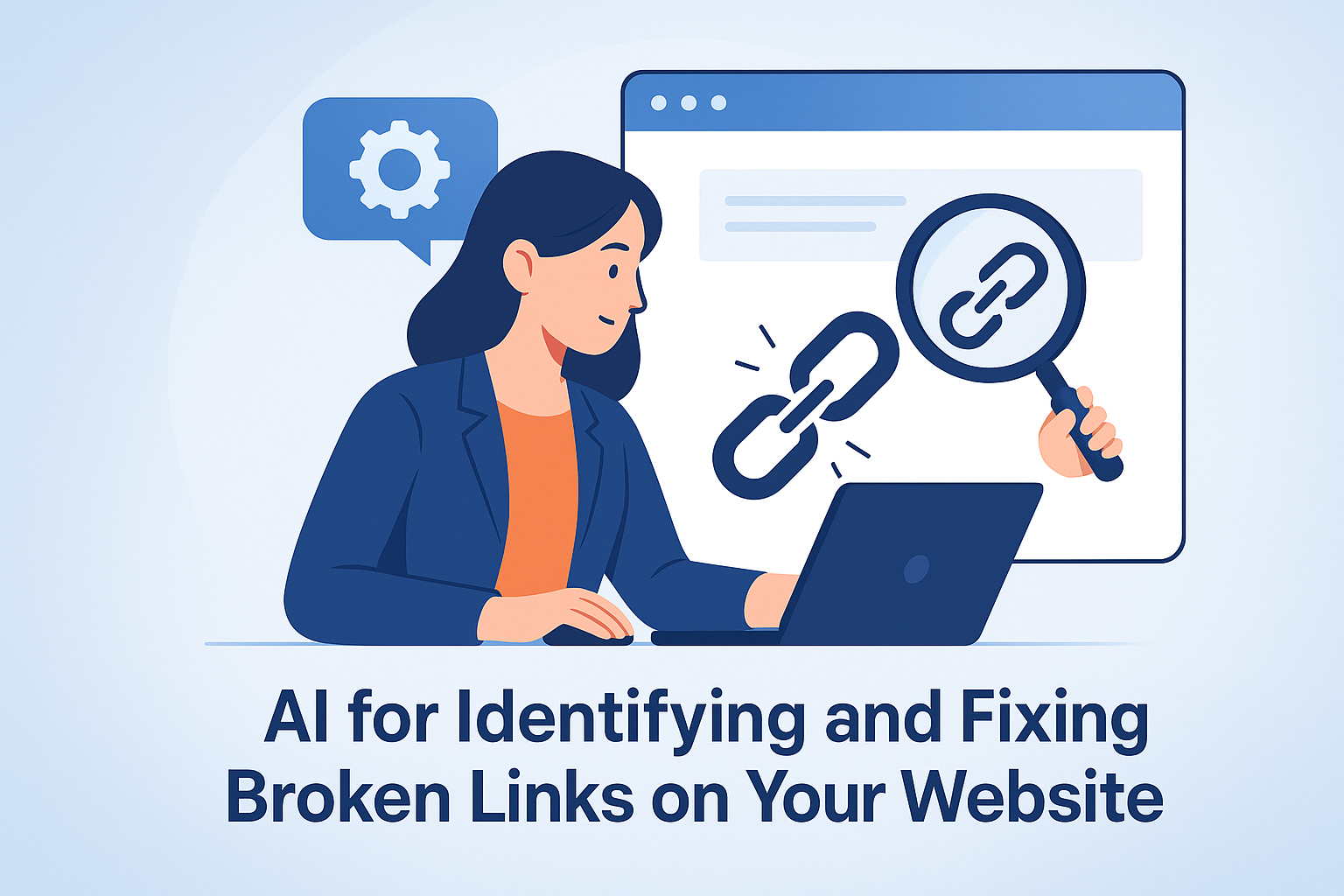How long should your blog post be?
Ask 10 SEOs and you’ll get 10 different answers. Some say 500 words is plenty. Others swear by 2,000+ word posts. The truth? The best content length is the one that matches your audience’s behavior and search intent.
Thanks to AI, you no longer have to guess.
You can now analyze user behavior, measure engagement, and dynamically adjust content length using tools like DIYSEO GPT and the DIYSEO AI Writer—ensuring that each page is as long (or short) as it needs to be to rank and convert.
Why Content Length Should Be Based on Behavior—Not Guesswork
There’s no magic word count for SEO. Google doesn’t rank by word count—it ranks by helpfulness and relevance.
But here’s the catch:
| Metric | What It Tells You |
|---|---|
| Bounce rate | Content might be too long, too short, or poorly formatted |
| Time on page | Content is engaging—or not deep enough |
| Scroll depth | Users are skimming—or abandoning |
| Exit rate | The page may not answer the query fully |
| Conversion rate | Content length might affect call-to-action performance |
When you match content depth to user behavior, you improve:
- SEO rankings (by aligning with intent)
- UX (by not wasting users’ time)
- Conversion rates (by delivering the right amount of value)
Step-by-Step: How to Automatically Adjust Content Length with AI
✅ Step 1: Analyze Behavior Metrics Using DIYSEO GPT
Begin by running a Behavioral Content Audit inside DIYSEO GPT.
Prompt:
“Which of my top-performing blog posts are underperforming in time-on-page, scroll depth, or conversion rate?”
DIYSEO GPT will use connected analytics and GSC data to pinpoint:
- Pages that may be too thin for the search intent
- Pages that may be too long (readers drop off before the CTA)
- Posts where intent doesn’t match format
This gives you a prioritized list of content needing length-based adjustments.
✅ Step 2: Use DIYSEO AI Writer to Trim or Expand Based on Intent
Once you’ve identified a target page, use the DIYSEO AI Writer to expand or condense content based on user signals.
✂️ To Shorten Content:
“Rewrite this 400-word section to 200 words. Keep the main points but improve clarity and scan-ability.”
Use this when:
- Scroll depth is low
- Readers bounce quickly
- Intent is transactional or navigational
➕ To Expand Content:
“Add 300 words to this article to better explain ‘how AI helps with on-page SEO audits.’ Include examples and a bulleted list.”
Use this when:
- Time-on-page is low
- Questions go unanswered
- Competitors offer more comprehensive coverage
AI ensures your content aligns with what real users want—and delivers it efficiently.
✅ Step 3: Match Length to Search Intent
Use AI to adjust content based on intent stage:
| Intent Type | Ideal Length | AI Strategy |
|---|---|---|
| Navigational | < 500 words | Short, clear summaries and CTAs |
| Transactional | 500–1,000 words | Feature benefits, comparisons, FAQs |
| Informational | 1,000–2,000+ words | In-depth guides, tutorials, visuals |
Prompt:
“Rewrite this article to target ‘informational intent’ for the keyword ‘AI SEO content planner.’ Expand with step-by-step details and examples.”
✅ Step 4: Add Length-Aware Elements (Summaries, Jump Links, FAQs)
When expanding content, break it up for better readability:
- Add summaries at the top
- Insert jump links for longer posts
- Use FAQs to handle extra questions
- Apply bullets and tables for visual flow
Use the DIYSEO AI Writer to auto-generate:
Prompt:
“Add a 3-sentence summary and 3 FAQs to this 1,800-word guide. Focus on voice-friendly answers.”
Output:
This guide shows how to use AI to automate blog planning for SEO. Learn how to pick keywords, build calendars, and track results. Perfect for marketers and business owners.
✅ Step 5: Automate Future Length Audits with DIYSEO GPT
Don’t just fix once—monitor and adjust over time.
Use DIYSEO GPT to run monthly reports:
Ask:
“Which articles published in the last 60 days have high bounce rates or short time-on-page relative to word count?”
“Which long-form posts need trimming based on engagement signals?”
This lets you fine-tune content length as your audience behavior evolves.
Bonus: Promote Well-Calibrated Content via DIYSEO Link Marketplace
Once your content is length-optimized, amplify it with backlinks from the DIYSEO Link Marketplace.
Why it works:
- Content that matches searcher expectations gets linked to more often
- Longer content ranks better when properly promoted
- Shorter, high-intent pages benefit from contextual anchor placement
Strategy:
- Choose content recently expanded or trimmed with positive user behavior gains
- Build 3–5 backlinks from relevant publishers using keywords like:
- AI SEO strategy guide
- Best AI content tools 2024
- Quick intro to AI SEO automation
Real-World Example: Adjusting Content Length = Higher Conversions
Problem: A 2,200-word blog post titled “AI SEO Tools for Agencies” had a high bounce rate and low CTA clicks.
DIYSEO Fix:
- Ran a Behavioral Audit with DIYSEO GPT → Found most users exited after 45% scroll depth
- Used DIYSEO AI Writer to:
- Remove redundant content
- Add a summary, jump links, and CTA earlier in the post
- Trim the article to 1,400 words
- Re-promoted the post with 3 new backlinks from DIYSEO Link Marketplace
Results:
- Bounce rate dropped from 69% to 44%
- Average time-on-page increased by 31 seconds
- Conversions (free trial sign-ups) increased by 56%
- Post ranked in the top 3 for 4 long-tail keywords within 3 weeks
DIYSEO Content Length Optimization Workflow
| Step | Tool | Task |
|---|---|---|
| Analyze user behavior | DIYSEO GPT | Identify content that’s too short or long |
| Adjust content length | DIYSEO AI Writer | Condense or expand based on engagement |
| Match search intent | DIYSEO AI Writer | Optimize format and depth per query type |
| Enhance UX | DIYSEO AI Writer | Add summaries, FAQs, and layout elements |
| Monitor impact | DIYSEO GPT | Track changes in time-on-page and conversion |
| Promote optimized content | DIYSEO Link Marketplace | Build authority and traffic with backlinks |
Final Thoughts
Content length isn’t about hitting a magic number—it’s about delivering the right amount of value in the format your audience prefers.
With DIYSEO, you can:
- Automatically detect when content is too long or too thin
- Use AI to rewrite content to fit user behavior and search intent
- Monitor, test, and optimize continuously
- Promote your best-performing content with targeted backlinks
Smart SEO content is dynamic. AI gives you the power to shape it around real behavior—not hunches.
Frequently Asked Questions
1. What is AI-driven content length adjustment and how does it work?
AI-driven content length adjustment refers to the use of artificial intelligence technologies to modify the length of digital content based on the analysis of user behavior. Essentially, this involves using algorithms to monitor and interpret how users interact with content, such as scrolling habits, time spent on a page, and click engagement. The AI system processes this data to understand user preferences and adapt the content accordingly. For instance, if a user frequently skims through articles, the AI might present shorter summaries, while a different user interested in in-depth detail will receive longer, more comprehensive content. This approach aims to personalize the content experience, ensuring that it is not only engaging but also suitably tailored to individual consumption patterns.
2. Why is adjusting content length according to user behavior important?
The importance of adjusting content length based on user behavior stems from the growing diversity in how people consume information. In today’s fast-paced digital landscape, attention spans are shrinking, and users are increasingly selective with the content they engage with. Standard, one-size-fits-all content strategies often fail to capture the audience’s attention because they do not account for these variances in consumption preferences. By tailoring content length to individual user behaviors, creators ensure that information is presented in a manner that is most likely to be consumed and appreciated by each unique user. This personalization leads to enhanced user experiences, increased engagement levels, and often, higher rates of interaction, conversion, or comprehension depending on the content’s purpose.
3. How can AI accurately determine a user’s preferred content length?
AI determines a user’s preferred content length by analyzing various metrics that reflect reading and browsing habits. These metrics might include how quickly a user scrolls through content, the amount of time spent on particular sections of a page, bounce rates, and even mouse movements or clicks. By accumulating and processing this data over time, AI models can develop an understanding of a user’s preferences, such as whether they favor brief overviews or detailed pieces. Advanced AI systems employ machine learning algorithms to refine their predictions, continuously learning and improving based on feedback and new data trends. These intelligent systems do not merely rely on user history but also consider context, such as the type of device being used or the time of day, to make more precise adjustments.
4. What are the potential challenges when implementing AI for content adjustment?
Implementing AI for content length adjustment comes with several challenges. Firstly, achieving accurate user behavior analysis requires collecting vast amounts of data, which raises privacy and ethical considerations. Ensuring compliance with data protection regulations, like GDPR, while still gathering useful insights, is a delicate balance. Another challenge is the technological complexity involved in designing adaptive systems that can process real-time data and make on-the-fly content adjustments without compromising performance. There is also the risk of AI misinterpreting user behavior, leading to poor personalization and possible annoyance for the user. Overcoming these challenges necessitates robust data handling and processing systems, ongoing algorithmic improvements, and employing transparent data policies to build trust with users.
5. How is AI-driven content adjustment shaping the future of digital media?
AI-driven content adjustment is set to profoundly impact the future of digital media by spearheading the shift towards hyper-personalized experiences. As AI technologies become more sophisticated, the ability to finely tune content to individual user behaviors will transform user interactions, leading to more meaningful and impactful engagements. This evolution will likely extend beyond just content length; it may encompass style adaptation, language preferences, and even adaptive visuals, creating a completely tailored user experience. The shift will necessitate new content creation strategies, calling for dynamic and flexible approaches that fully leverage AI’s potential. Ultimately, these advancements will revolutionize digital media ecosystems, empowering creators to connect with their audiences on a deeper, more intuitive level, thereby driving innovation and competitive advantage in the content industry.



